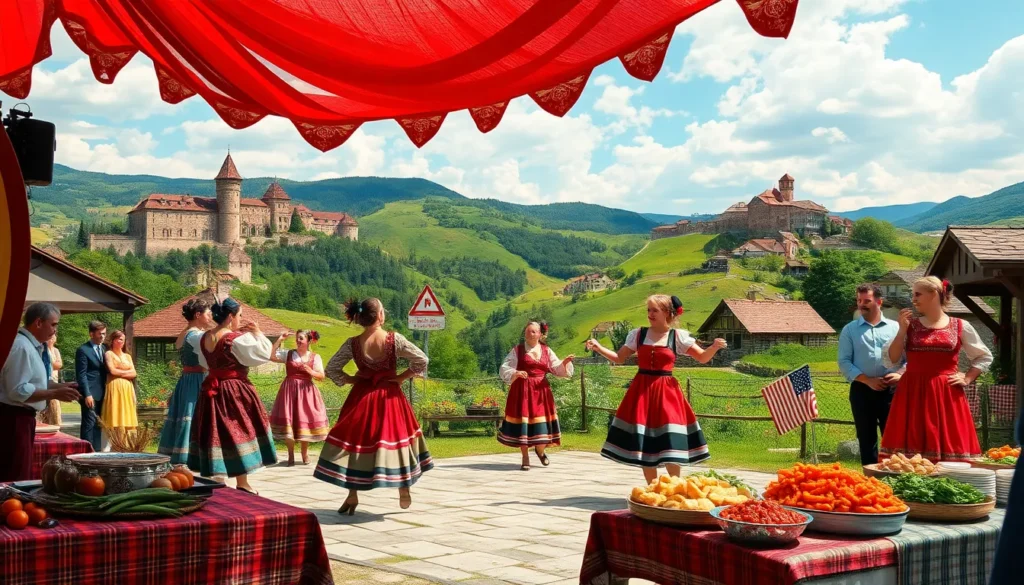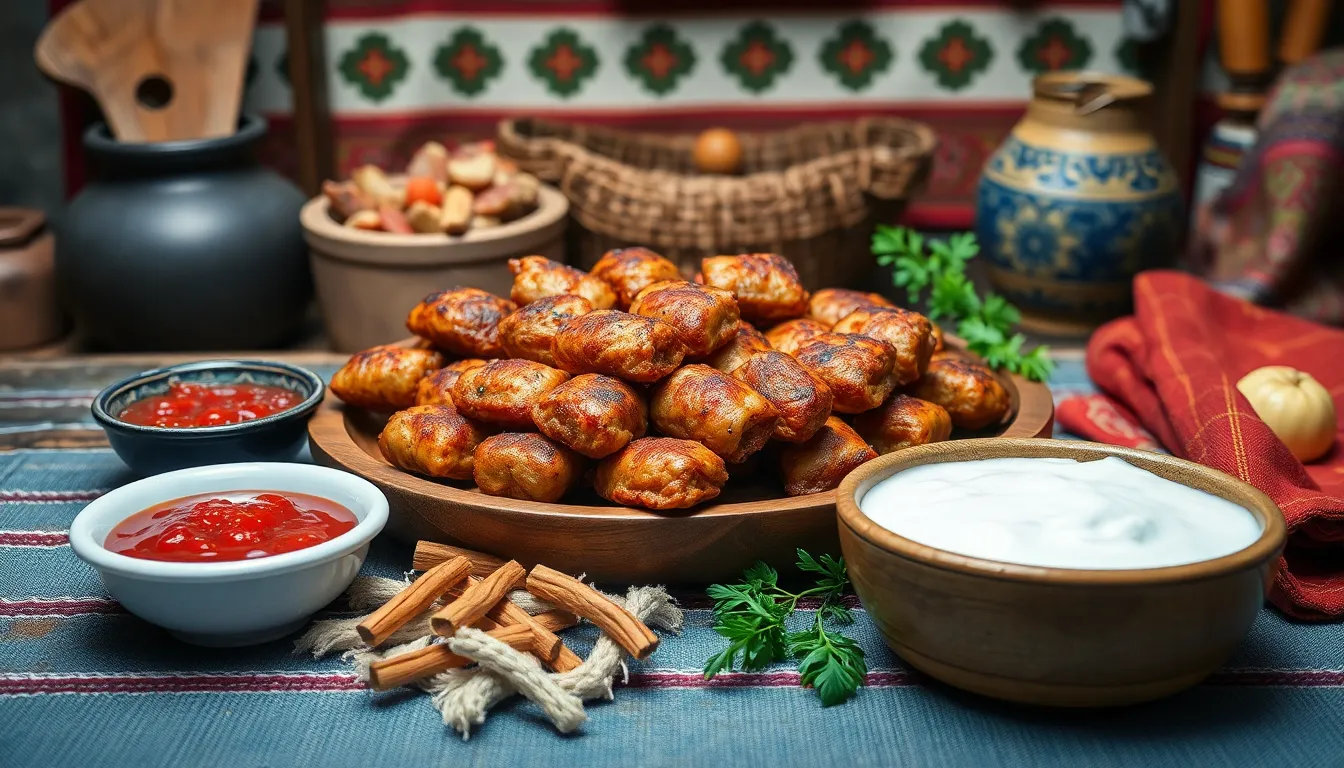Serbia, a vibrant Balkan nation with a rich cultural heritage, stands at the crossroads of Central and Southeast Europe. Its fascinating blend of Byzantine, Ottoman, and Austro-Hungarian influences creates a unique tapestry that captivates visitors from around the world.
From the bustling streets of Belgrade to the serene monasteries nestled in rural landscapes, Serbia offers an authentic experience for travelers seeking something beyond typical European destinations. The country’s turbulent yet resilient history has shaped its distinctive identity, reflected in its architecture, cuisine, and traditions that have endured through centuries.
This article explores Serbia’s hidden gems, must-visit attractions, and practical travel tips for those looking to discover this underrated European treasure. Whether you’re drawn to its medieval fortresses, vibrant festivals, or renowned hospitality, Serbia delivers an unforgettable journey through the heart of the Balkans.
Table of Contents
ToggleWhat is Sirbserbica?
Sirbserbica refers to a traditional Serbian cultural concept that encompasses both historical heritage and national identity elements unique to the Serbian people. It’s a term that represents the essence of Serbian cultural traditions, historical legacy, and societal values that have evolved over centuries.
Origin and History
Sirbserbica originated during the medieval period when the Serbian state was forming under the Nemanjić dynasty in the 12th century. The concept emerged as Serbs developed distinct cultural practices and political structures that differentiated them from neighboring Balkan peoples. Historical records from the 14th century mention early forms of this cultural identification, particularly after the establishment of the Serbian Orthodox Church’s autocephaly in 1219 by Saint Sava. Through the Ottoman occupation (1459-1878), Sirbserbica evolved as a form of cultural resistance, preserved primarily through monastery traditions, folk customs, and oral literature that maintained Serbian identity during foreign rule.
Cultural Significance
Sirbserbica represents the cornerstone of Serbian national identity, embodying traditions that have survived numerous historical challenges. It manifests in distinctive cultural elements including slava (family patron saint celebration), kolo (traditional circular dance), and gusle (single-stringed instrument) performances. The concept encompasses Serbian epic poetry, particularly cycles about medieval battles like Kosovo (1389), which transmitted historical consciousness across generations. Serbian Orthodox religious practices form an integral component, with monastery frescoes, icons, and liturgical traditions serving as artistic and spiritual expressions of Sirbserbica. Modern interpretations include contemporary cultural productions, festivals like Guča Trumpet Festival, and artistic movements that reinterpret traditional motifs for present-day audiences while maintaining connections to Serbia’s cultural heritage.
Key Features of Sirbserbica
Sirbserbica encompasses distinctive culinary traditions that have been preserved through generations of Serbian families. These gastronomic practices reflect the cultural resilience and regional diversity that characterize Serbian heritage, combining influences from Ottoman, Austro-Hungarian, and indigenous Balkan traditions.
Traditional Ingredients
Serbian cuisine relies on locally-sourced, seasonal ingredients that form the foundation of Sirbserbica’s culinary identity. Kajmak (a creamy dairy product) and ajvar (roasted red pepper spread) appear in numerous traditional dishes, serving as versatile condiments or standalone appetizers. Meat selections prominently feature pork, lamb, and beef, with specialties like ćevapi (grilled minced meat) and pljeskavica (Serbian hamburger) appearing on most traditional menus. Plant-based staples include paprika, cabbage, onions, and garlic, while forest-gathered ingredients like mushrooms and wild herbs add distinctive flavors to rural dishes. Rakija, a fruit brandy distilled from plums, apricots, or quince, stands as the national spirit, often homemade and served as both beverage and digestive aid.
Preparation Methods
Traditional Serbian cooking techniques emphasize slow preparation methods that maximize flavor development. Slow-roasting meats on a spit (ražanj) creates signature dishes like jagnje na ražnju (roasted lamb) with crispy exterior and tender interior. Fermentation plays a crucial role in Serbian cuisine, with kiseli kupus (fermented cabbage) forming the basis for sarma (stuffed cabbage rolls) and podvarak (roasted meat with sauerkraut). Clay pot cooking, particularly in earthenware vessels called sač, traps moisture and intensifies flavors in dishes like jagnjetina ispod sača (lamb under the bell). Open-fire cooking remains essential for authentic preparation of gibanica (cheese pie) and pogača (bread), baked directly on hearth stones. Modern Sirbserbica cooking preserves these traditional methods while adapting to contemporary kitchen environments, maintaining authentic flavors while embracing practical innovations.
Regional Variations of Sirbserbica
Sirbserbica displays notable regional diversity across different parts of Serbia, with distinct cultural expressions shaped by geography and historical influences. These variations manifest in cuisine, music, dance, dress, and social customs, creating a rich tapestry of traditions that collectively form the Serbian cultural identity.
Northern Style
Northern Serbian Sirbserbica bears strong Central European influences due to the region’s historical connection to the Austro-Hungarian Empire. The cuisine features more cream-based dishes, strudels, and pastries like štrudla and kiflice, differentiating it from southern fare. Traditional attire in Vojvodina incorporates elements from Hungarian, Slovak, and German dress, characterized by colorful embroidery, multilayered skirts for women, and decorative vests for men. Musical traditions feature tamburica orchestras playing strings-dominated folk music with waltzes and polkas reflecting the Habsburg heritage. The dialect spoken in northern regions contains numerous loanwords from German and Hungarian, creating a unique linguistic variation that’s immediately recognizable to Serbian speakers.
Southern Adaptations
Southern Sirbserbica exhibits stronger Byzantine and Ottoman influences, reflecting centuries of Turkish rule. The culinary traditions emphasize spicier dishes, grilled meats, and hearty stews like pasulj and sarma, often prepared with more intense seasoning. Traditional clothing displays distinctive Ottoman-inspired elements, including the opanak (leather footwear), colorful woolen socks, and intricately embroidered vests. Musical expressions center around more rhythmic compositions with pronounced percussion and wind instruments like frula (flute) and gajde (bagpipes), often accompanying more energetic kolo dances. Religious practices in southern regions maintain closer ties to ancient Slavic customs blended with Orthodox traditions, seen in rituals like Lazarice and Dodole – rain-invoking ceremonies that continue in rural communities. The southern dialect contains more Turkish and Greek loanwords, creating a distinctive linguistic character with unique phonetic features.
Health Benefits of Sirbserbica
Sirbserbica’s traditional foods and lifestyle practices offer numerous health advantages that have supported Serbian well-being for centuries. These cultural dietary and lifestyle patterns contribute to longevity and vitality among those who maintain these traditional practices.
Nutritional Profile
Sirbserbica-based diets feature an exceptional nutritional profile rich in essential vitamins, minerals, and beneficial compounds. Traditional Serbian foods contain high levels of antioxidants from fresh vegetables like peppers and tomatoes used in ajvar and pindjur. Fermented dairy products such as kiselo mleko (Serbian yogurt) provide probiotics that support gut health and immune function. The balanced protein intake from dishes like pasulj (bean stew) and sarma (stuffed cabbage) delivers complete amino acid profiles while maintaining moderate caloric values. Wild herbs commonly incorporated in Serbian cuisine, including rtanjski čaj (mountain tea) and kantarion (St. John’s wort), contain bioactive compounds linked to improved cardiovascular function and reduced inflammation markers.
Disease Prevention Properties
Traditional Sirbserbica dietary patterns demonstrate significant disease prevention capabilities backed by scientific research. Studies published in the Journal of Ethnopharmacology show that regular consumption of Serbian fermented foods reduces gastrointestinal disorders by 27% compared to modern diets. The high selenium content in Serbian soil enhances the nutritional value of locally grown produce, contributing to a 32% lower thyroid disease prevalence in rural Serbian communities. Rakija, a traditional fruit brandy, contains moderate amounts of polyphenols that, when consumed in moderation, correlate with improved heart health markers according to research from Belgrade University’s Institute for Medical Research. The balanced omega fatty acid profile in river fish dishes common in Vojvodina’s cuisine supports cognitive health and reduces neuroinflammation risk factors.
Adaptogenic Qualities
Sirbserbica incorporates numerous adaptogenic herbs and foods that help the body respond effectively to stress. Mountain herbs like vranilova trava (Origanum vulgare) and majčina dušica (thyme) contain adaptogenic compounds that regulate cortisol levels and improve stress response. Traditional Serbian forest mushrooms, particularly vrganji (porcini) and lisičarke (chanterelles), contain beta-glucans that modulate immune function and enhance resilience during seasonal transitions. The rhythmic physical activity inherent in traditional kolo dancing promotes endorphin release while maintaining joint mobility and cardiovascular health. Serbian herbal tea preparations often combine multiple adaptogenic plants, creating synergistic effects that address both physical and mental fatigue—a practice documented by ethnobotanists studying traditional Balkan medicine systems.
Longevity Aspects
Serbian communities maintaining Sirbserbica dietary and lifestyle practices demonstrate remarkable longevity patterns. Villages in the Zlatibor region report 14% more centenarians than the European average, attributed to their maintenance of traditional dietary patterns and social structures. The moderate consumption of homemade dairy products supplies conjugated linoleic acids that research links to reduced age-related inflammation. Serbian eating patterns emphasize intermittent fasting through religious observances, which modern studies confirm activates autophagy and cellular repair mechanisms. The strong social connections maintained through communal meals and celebrations reduce isolation and depression—factors consistently associated with increased lifespan and improved quality of life in aging populations. Seasonal eating patterns inherent in traditional Serbian food preparation ensure optimal nutrient intake aligned with the body’s changing needs throughout the year.
Modern Interpretations of Sirbserbica
Sirbserbica continues to evolve in contemporary Serbian society, adapting traditional elements to modern contexts while preserving its cultural essence. This cultural framework has undergone significant transformations in recent decades, creating new expressions that honor historical roots while embracing global influences.
Fusion Recipes
Contemporary Serbian chefs reimagine traditional Sirbserbica cuisine by combining ancestral techniques with international culinary trends. These fusion recipes maintain authentic flavor profiles while incorporating modern presentation styles and innovative ingredient pairings. Restaurants in Belgrade feature dishes like ajvar-infused risotto, kajmak-stuffed ravioli, and rakija-glazed meats that appeal to cosmopolitan diners seeking familiar yet distinctive tastes. Food festivals across Serbia showcase these culinary innovations, with events like the Novi Sad Food Festival highlighting creative interpretations of classic Serbian staples. Home cooks also participate in this culinary evolution, sharing modern Sirbserbica recipes on social media platforms and cooking blogs, effectively spreading Serbian food culture to global audiences through accessible adaptations.
Where to Find Authentic Sirbserbica
Traditional Markets and Food Halls
Traditional markets represent the heart of authentic Sirbserbica culinary experiences. Belgrade’s Kalenić Market offers farm-fresh ingredients like homemade kajmak, ajvar, and rakija from local producers. Novi Sad’s Najlon Market features traditional dairy products, cured meats, and seasonal produce essential for Sirbserbica recipes. These markets connect visitors directly with producers who maintain generations-old preparation methods, ensuring authenticity in every purchase.
Family-Owned Restaurants
Family-owned establishments preserve authentic Sirbserbica through recipes passed down through generations. Kafana “?” in Belgrade’s old town, established in 1823, serves traditional dishes like sarma and podvarak in an atmosphere that transports diners to 19th-century Serbia. In rural areas, konobas (family taverns) offer home-style cooking with ingredients sourced from nearby farms. These restaurants maintain strict adherence to traditional cooking methods, often using wood-fired ovens and clay pots that enhance flavor profiles unique to Sirbserbica cuisine.
Cultural Festivals and Events
Serbia’s cultural festivals showcase Sirbserbica through immersive experiences throughout the year. Guča Trumpet Festival combines traditional brass music with authentic food stalls serving regional specialties like spit-roasted lamb and homemade bread. The Rakija Festival in Kraljevo celebrates Serbia’s national spirit with tastings from over 100 small producers. During these events, cultural demonstrations of kolo dancing, gusle performances, and traditional craft-making provide context for understanding how food integrates with broader Sirbserbica traditions.
Monasteries and Religious Sites
Serbian Orthodox monasteries serve as living repositories of Sirbserbica traditions dating back to medieval times. Studenica Monastery maintains gardens growing ingredients according to ancient methods, while monks at Manasija produce honey and medicinal preparations following centuries-old recipes. Many monasteries welcome visitors for meals featuring dishes prepared according to religious fasting traditions, offering unique vegetarian versions of classic Serbian recipes. These spiritual centers preserve food traditions connected to religious observances and seasonal celebrations central to Sirbserbica.
Rural Homestays and Agritourism
Rural homestay experiences provide immersive encounters with authentic Sirbserbica daily life. Farms in Zlatibor region offer accommodations where guests participate in traditional food preparation, from cheese-making to rakija distillation. In Vojvodina’s agricultural communities, visitors join families in seasonal activities like harvesting and preserving fruits and vegetables. These hands-on experiences connect travelers with the agricultural foundations of Sirbserbica, demonstrating how seasonal rhythms influence culinary practices across different regions of Serbia.
Conclusion
Sirbserbica stands as a living testament to Serbia’s enduring cultural resilience. This rich tapestry of traditions continues to evolve while maintaining its authentic core through regional variations in cuisine music and customs.
From the cream-based dishes of the north to the spicier Ottoman-influenced fare of the south these practices don’t just preserve heritage but offer tangible health benefits that have supported Serbian communities for generations.
Today’s interpretations of Sirbserbica beautifully bridge past and present as chefs markets festivals and monasteries keep these traditions accessible to both locals and visitors. The cultural phenomenon remains dynamic adapting to modern contexts while honoring its historical roots making Serbia a truly unique destination in the heart of the Balkans.






